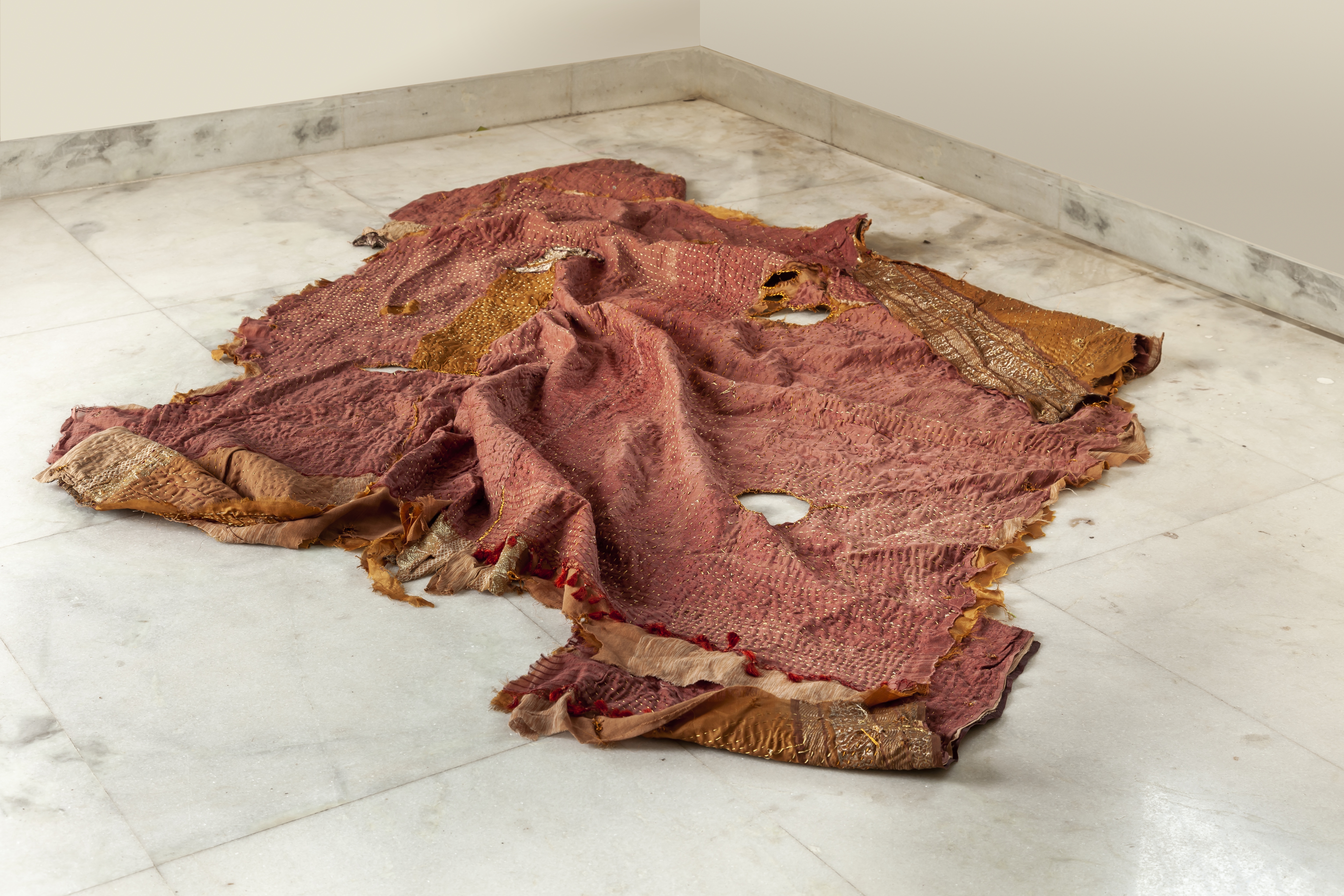Heirloom
For centuries, women in Bengal have taken their own old saris and stitched them together in layers with a simple running stitch to create functional quilts known as kanthas. Women sewed kanthas for their husbands, children and grandchildren; produced through countless hours of tedious labor, usually during times of rest snatched between household chores. The old saris used are soft and worn down from contact with the original wearer’s own skin and are then given to loved ones so that they may serve as soft second skins to keep them warm. This tradition of kantha quilting embodies elements of thrift, but even more so, works within economies of intimacy.
I began this work by purchasing old, discarded saris from ragpickers who had collected them by going door to door in wealthy neighborhoods. These saris, worn-down by privileged women are literally handed over to the rag-picking women across a wide social and economic divide. I then invited the women from whom I had purchased the saris to help me stitch them together in layers using the intimate practice of kantha. The layered and darned second skin produced from fabric that was worn close to the skin of unknown women has then been stretched out, as one does with an animal skin, alluding to issues of untouchability, alienation of labor, empathy and the mediation of intimacy in a capitalist economy.
![]()
![]()
![]()
Heirloom (I)
2017
Used saris, embroidery thread
69 x 52 inches
![]()
![]()
![]()
Heirloom (II)
2018
Used saris, embroidery thread
88 x 60 inches
![]()
![]()
Heirloom (III)
2018
Used saris, embroidery thread
94 x 72 inches







